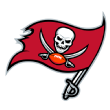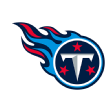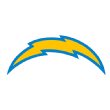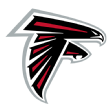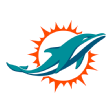The NFL players and coaches who have the most to gain and lose in 2019

With an underwhelming trade deadline day in the rearview mirror, we're about to hit the halfway point of the NFL season. While we might see a stray veteran like quarterbackAndy Dalton or cornerback Aqib Talib hit the free-agent market in the weeks to come, outside of teams activating players off injured reserve, organizations are going to have to win with what they've got. The team you see over the next couple of weeks is generally going to be the team you have for the rest of the season.
Twenty of the league's 32 teams still have at least a 10% chance of making it to the postseason, per ESPN's Football Power Index, so the majority of the league will have something to play for in the second half. Some players and coaches, though, will have more to gain than others. I'm going to run through the people across the league who have the most riding on this second half in terms of their financial and professional future.
In putting this together, I'm leaving out players whose futures are generally already settled. I'm also not going to bother to mention the sort of career-threatening injury that could cost any player future earnings. We're looking for players who are facing a fork in the road with two very divergent paths based on how they perform over the next two months. Let's start with a player whom fans thought to be a building block as recently as August and might now be playing for his job, then dive into two more quarterbacks.
Jump to a player or coach:
QBs: Mariota | Newton | Trubisky | Winston
More offense: Gordon | Henry | Sanders
Defenders: Barrett | Beasley | Clowney | Peters
Mitchell Trubisky, QB, Chicago Bears
In this case, Trubisky isn't playing for a raise in 2020. Instead, the Bears will need to decide on Trubisky's fifth-year option for 2021, which would pencil in a salary of more than $24 million for that season. The option would be guaranteed for injury, so the Bears would be able to move on after 2020 without any penalty if Trubisky can pass a physical. You can insert your own joke about how risky it is to ask Trubisky to pass something here.
There are two reasons to think the Bears will pick up Trubisky's option independent of his play, and they're both more about general manager Ryan Pace than they are about the embattled former No. 2 overall pick.
First is the case of cornerback Kyle Fuller. After three mostly disappointing years in Chicago, Pace declined Fuller's fifth-year option and signed Marcus Cooper and Prince Amukamara to play ahead of the former first-round pick.
Fuller rededicated himself to the game and had an impressive 2017, which forced the Bears to transition-tag him and then pay him nearly the cost of two consecutive franchise tags after the Packers signed Fuller to an offer sheet. Fuller excelled in 2018, but the Bears cost themselves millions of dollars by giving up on him too early. The same thought will be running through Pace's mind as he evaluates the 25-year-old Trubisky's chances of eventually succeeding.
The other reality is that Pace made a huge bet on Trubisky succeeding. He didn't give up a huge haul to move from No. 3 to No. 2 in the 2017 draft, but the story that Pace traded up to draft Trubisky when he could have stayed put and had his pick of Deshaun Watson or Patrick Mahomes is going to sting. My opinion is that the NFL as a whole is generally pretty bad at evaluating quarterback prospects, and it's impossible to know how Watson or Mahomes would have developed in Chicago, but the Bears chose a guy who might not be an NFL-caliber starter over two quarterbacks who were more successful in college and are arguably the two best young quarterbacks in football.
General managers who take a quarterback in the top five almost always re-raise their bets on those passers. It can hurt. Go back to that 2017 draft. After Pace took Trubisky second, the Jaguars came up with the fourth pick. With Blake Bortles coming off a wildly disappointing 2016 and a generally middling first three seasons, the Jags could have used the opportunity to draft Mahomes or Watson. Instead, after picking up Bortles' fifth-year option, they used the pick on Leonard Fournette, who has only one half-season of above-average running back play in the books.
I'm not sure we'll ever see Trubisky hit the heights that Bears fans were expecting before the 2019 season or were projecting onto him during the 2018 campaign, at least for any extended stretch of time. It was clear that coach Matt Nagy had little faith in him or the offense as a whole last week against the Chargers on Sunday, even before that now-infamous decision to sit on the ball before Eddy Pineiro missed a would-be winning field goal. The Bears ran the ball 38 times, and when Trubisky dropped back to pass, Nagy tried to keep the decision-making as simple as possible, even if it meant running a one-man route near the goal line.
Trubisky looked best on the final drive, when he did something for the first time since the opening series of Week 1: scramble for a first down. I've written about the disappearance of Trubisky's scrambling ability a couple of times this year, and while scrambling is the most likely activity to aggravate Trubisky's shoulder injury, it's also a necessary trait for teams to be scared of him as a quarterback. I know that the best-case scenario for 2019 would have been Trubisky running less and picking defenses apart from the pocket more frequently, but that dream is dead for now. Trubisky and the Bears are in survival mode: First downs by any means necessary.
If Trubisky continues to struggle, the Bears might choose to decline his option. Even if they pick up his option, you would figure they would bring in somebody better than expert backup Chase Daniel to compete with Trubisky in 2020. The presence of offensive coordinator Mark Helfrich on this staff makes for an obvious candidate, though Helfrich could get scapegoated for Trubisky's regression. Helfrich was the offensive coordinator and then head coach at Oregon while Marcus Mariota excelled for the Ducks. With Mariota likely coming available this offseason, the Bears would be an obvious landing point for the former Heisman Trophy winner.
Jameis Winston, QB, Tampa Buccaneers
After throwing for 385 yards and four touchdowns in a Week 4 victory over the Rams, it looked like Winston was set to excel in Bruce Arians' offense. Over his past two games, though, Winston has turned over the ball 10 times. Arians has tried to spread the blame for those mistakes to Winston's teammates, but this isn't exactly a new issue for the quarterback.
The reality with Winston is that we have a good sense of the quarterback he's going to be. He has a strong arm. He doesn't get rattled after mistakes. He's good at improvising and extending plays, although that can be both a blessing and a curse. His yearly stats are remarkably consistent, even if his game-to-game performance can seem wildly erratic.
For the Bucs and general manager Jason Licht, who drafted Winston with the first pick of the 2015 draft, that's been good enough to keep the former Florida State star around, if not enough to justify a long-term deal. Winston was benched for Ryan Fitzpatrick last season, and while the Bucs have onlyRyan Griffin and an injured Blaine Gabbert behind him, he can't keep this level of play up for very long without the Buccaneers making a change. It's impossible to win when your quarterback is turning over the ball five times per week.
I don't think Winston will continue to turn over the ball at this sort of rate, but much of his future depends on what happens over the final eight games of the season. The Buccaneers certainly want him to prove that he's their guy for the future. The 67-year-old Arians, as he'll happily tell you, didn't take the Bucs job to develop a young quarterback for success down the line. Licht just signed a five-year extension. The best thing for both of them would be if Winston plays well enough down the stretch to justify a long-term contract.
It also would be the best thing for Winston, whose attractiveness to other organizations isn't clear. There are teams around the league who won't even consider adding a player who has been accused of multiple sexual assaults, let alone one with Winston's on-field inconsistency. He would be one in a group of borderline starting quarterback options this offseason, a group that could include Marcus Mariota, Ryan Tannehill, Joe Flacco, Andy Dalton, Case Keenum, Teddy Bridgewaterand Eli Manning. Winston might be the most talented quarterback in that group, but none of those players has Winston's track record of off-field misbehavior.
Some team would sign Winston, but it's entirely possible that the only team that thinks he is worth a significant long-term deal is the one he's currently playing for. If he gets hot during the second half, the Bucs will likely give him something close to the five-year, $137.5 million deal the 49ers gave Jimmy Garoppolo before the 2018 season. That contract paid the former Patriots backup $42 million in Year 1.
If Winston doesn't impress during the second half and the Bucs head in a different direction, it will cost him a lot of money. If the league values him as a backup, he would likely be looking at a deal averaging between $6 million and $8 million per season. I can't think of another player who has more to gain -- or lose -- over the next nine weeks of football than Tampa's starting quarterback.
Marcus Mariota, QB, Tennessee Titans
Speaking of Mariota, his future looks perilous. The Titans benched him after two consecutive dismal starts for Ryan Tannehill, who has responded by leading the team to consecutive wins over the Chargers and Jaguars. Tannehill hasn't been incredible, as he has posted a Total QBR of 49.3, taken sacks more than 10% of the time and thrown a pick in each of his first two starts, but he has breathed life into a passing game that was depressingly conservative. Mariota, meanwhile, ranks last in Total QBR among qualifying starters at 31.7.
The famous stat that people tossed around with Mariota for years until 2018 was that he had never thrown an interception in the red zone. This seemed like a blessing, but it was really a reflection of his biggest flaw: He doesn't take enough risks to succeed. Tennessee's line isn't great, but Mariota's sack rate over the past two years has grown to a crippling 12%. According to NFL Next Gen Stats research, just 13.3% of Mariota's passes over the past two seasons have been thrown into a tight window, the third-lowest rate among passers with at least 300 attempts.
Mariota certainly doesn't seem close to getting his job back. The Titans face much stiffer competition before their bye in the Panthers and Chiefs -- and it's possible that consecutive stinkers from Tannehill would lead Mike Vrabel to go back to Mariota -- but his best chance of regaining the job is still a Tannehill injury. The former Dolphins quarterback hasn't played a full 16-game slate since 2015, so it's hardly out of the question that we'll see Mariota again in a Titans uniform.
It probably would take nothing short of a second playoff victory for the Titans to bring back Mariota as their starter in 2020. If he pulled that off, it wouldn't be entirely unexpected to see the Titans franchise their former second overall pick and give him one final shot. That tag likely will come in somewhere around $26 million. If not, Mariota probably is looking at a high-end backup deal, which would have an annual salary in the $7 million range. He already has lost a lot, but if he gets another chance with the Titans, he'll have to start playing like a quarterback with nothing to lose.
Melvin Gordon, RB, Los Angeles Chargers
How bad has holding out gone for Gordon? Since he returned to the Chargers in Week 5, he has averaged 2.5 yards per carry and 2.7 yards per reception. His most notable play was fumbling away a would-be winning touchdown at the goal line. Over his four games in the lineup, the Chargers have become the first team since 1946 to run for fewer than 40 yards in four consecutive games. He wanted to be paid like a special running back after one efficient season in 2018. He has been arguably the league's worst back since his return.
The deal for $10 million per year that the Chargers reportedly offered Gordon during his holdout is likely in a garbage can somewhere at team headquarters. The relationship between Gordon and the organization seems permanently soured at this point, although the Chargers always could choose to change their mind and offer him a big extension. Unless he takes a sudden, dramatic turn for the better, it's likely that he'll leave the organization after the season.
As was the case with a more accomplished back last offseason in Le'Veon Bell, the market might not be kind to Gordon. The list of teams that will need a running back and ignore history to use their cap space to pay one isn't long. We're looking at potentially Tampa Bay and Washington as viable Gordon suitors, with San Francisco as an outside candidate if it doesn't re-sign Tevin Coleman.
If Gordon doesn't impress during the second half, he's going to be looking at something close to the two-year, $8.5 million deal Coleman signed with the 49ers this offseason.With a big second half, Gordon might be able to talk someone into giving him a deal similar to the three-year, $39 million pact David Johnson signed with the Cardinals.
Hunter Henry, TE, Los Angeles Chargers
The Chargers might instead choose to use some of the resources they originally had earmarked for Gordon to bring back Henry, who likely will sign some sort of deal with the team this offseason. The size of that deal naturally depends on Henry's health, given that the oft-injured Arkansas product missed all of the 2018 regular season and four games this campaign.
His production this season suggests he could be one of the league's most impactful tight ends. The 24-year-old is averaging 76 receiving yards per game, which puts him just ahead of Travis Kelce and Austin Hooper and at the top of the leaderboard for tight ends with four or more games played. Since his return to the lineup in Week 6, Henry has generated 14 first downs in the passing game, which ranks fifth in the NFL.
Assuming that the Chargers move on from Gordon and don't need the franchise tag for quarterbackPhilip Rivers, they could slap Henry with the tag at around $11 million and ask him to prove what he can do for a full season. If Henry misses more time during the second half of the season, I would expect the Chargers to do just that. If he stays on the field and continues to play at this level, though, they likely will lock him up on a long-term deal. At a position in which no player has topped $10 million per season on a multiyear deal since Jimmy Graham hit that mark in 2014, Henry could be the first tight end to break up that string of zeroes.
Vic Beasley Jr., DE, Atlanta Falcons
As one of the players who was rumored to be on the market in advance of the trade deadline, it was no surprise that Beasley didn't attract much interest from opposing teams. While he led the NFL in 2016 with 15.5 sacks, the former first-round pick has just 11.5 over his ensuing 38 games, including 1.5 this season. Sacks aren't everything, but when you're a 246-pound edge rusher with a base salary of $12.8 million, you need to deliver more than one sack per month to return value.
The reality of the NFL, though, is that teams are desperate for quality pass-rushers. Beasley still is 27, and given how incompetent everyone on the Falcons' defense looks, there are going to be teams that see an opportunity to buy low on a potential difference-maker. Even if he continues to anonymously meander his way through the second half of the season, some team will give the Clemson product a one-year deal in the range of $4 million, which is about what Markus Golden got from the Giants this offseason.
If Beasley gets hot during the second half, though, his market suddenly could improve. There certainly were other teams that had first-round grades on Beasley when he came out of school, and if he can piece together a five-sack second half after Atlanta's bye, it wouldn't be shocking to see a team offer him a multiyear deal with more than $10 million in guarantees.
Jadeveon Clowney, DE, Seattle Seahawks
While the Seahawks were able to get Clowney at a bargain-basement rate by trading a third-round pick and two backup linebackers for him and what amounted to $8 million, Seattle had to make one key concession to get a deal done. General manager John Schneider & Co. reportedly promised to keep the franchise tag off Clowney in 2020, which will allow the former first overall pick to hit free agency. Any player with Clowney's skill set is going to get paid.
If he wants to get something north of $100 million, though, he is going to need to step things up over the second half. He certainly has played well for the Seahawks, but he has produced just two sacks and seven quarterback knockdowns through eight games. Everyone knows Clowney has the potential to put everything together and run off a 15-sack season, but if he continues on this pace, potential bidders will bow out after seeing modest production and microfracture surgery in his past.
The second half of Seattle's campaign could be worth $5 million per year to Clowney if he excels. A hot finish to the year also might compel a team to guarantee more of Clowney's salary in Year 3, a risk for a player with a meaningful injury history. Clowney will end up making a nice chunk of change either way, but a hot second half would make him the most important non-quarterback on the market.
Garett Bolles, OT, Denver Broncos
From 2017-18, Bolles led the league with 21 holding penalties, eight more than any other player. There was hope that legendary offensive line coach Mike Munchak would be able to turn him around, but so far this season, Bolles ... leads the league with nine holding penalties, three more than any other player. (The second-ranked player is teammate Ron Leary, so it's fair to say Munchak's arrival hasn't yet transformed the Broncos' line.)
Bolles is essentially playing for his professional future during the second half of 2019. If he continues to struggle, the Broncos will almost certainly decline his 2021 fifth-year option and pursue a replacement at left tackle this offseason, which would likely consign him to backup tackle duty, either in Denver or elsewhere. If he finally shows signs of life and plays like a franchise left tackle, Denver could very well pick up that option and commit to him as its 2020 starter. It would take a level of play the 27-year-old Bolles has yet to show during his professional career.
Marcus Peters, CB, Baltimore Ravens
It seemed like Peters was destined to be one of the young guns who would sign an extension to stay with the Rams, but after he struggled for the second consecutive season, the Rams cut bait and sent Peters to the Ravens before the trade deadline. The good version of Peters showed up for his Baltimore debut, with the former All-Pro luring Russell Wilson into the MVP candidate's first interception of the year, a 67-yard pick-six.
Is Peters' future with the Ravens? Maybe. Baltimore already has given slot cornerback Tavon Young an extension and will soon need to pay star Marlon Humphrey, though veteranJimmy Smith's deal expires after the season, while Brandon Carr is on a team option. The Ravens have a lot of money concentrated in their secondary with Earl Thomas and Tony Jefferson also signed to free-agent deals, so it wouldn't shock me if they saw Peters as a rental they'll use to net a compensatory pick in 2021.
If he plays at a high level, he'll get paid. For all his missteps, he is too talented and has too much of a nose for the football to stay on the market for long. (He has 25 interceptions in five seasons.) Too many teams need help at cornerback in a league in which defenses are in their nickel packages more than half of the time. If we get the guy who gave up touchdowns with mental mistakes in Los Angeles, though, Peters might end up settling for a one-year deal in the hopes of resetting his market for 2021.
Cam Newton, QB, Carolina Panthers
Kyle Allen's ugly start against the 49ers quieted the wildly premature chatter that he was ready to take over for Newton as the Panthers' quarterback of the future. Allen will start again this Sunday against the Titans, but it's clear the Panthers will be giving this job back to their former MVP when he's healthy. The Panthers have the talent to compete for a Super Bowl if they can get the Newton who impressed during the first half of 2018 back in the fold. Allen can't dream of touching Newton's upside.
The Panthers likely aren't prepared to move on from their longtime starter, but this offseason brings both parties to an interesting crossroads. Newton, who's 30 years old, will be entering the final year of his deal in 2020, when he is set to make a base salary of $18.6 million. Teams typically extend their franchise quarterbacks in the summer before they officially enter that lame-duck season. A third contract would likely net Newton something in the ballpark of $60 million in guarantees at signing.
Given his recent injury history, though, Carolina could choose to let him play out the final year of his contract before either franchising him for 2021, signing him to a new deal or pursuing a new path at quarterback. If we see a healthy Newton return and reach that 2018 level of play during the second half, I think the Panthers will extend Newton this offseason. If he doesn't come back or look like his old self, though, they can't realistically extend him next summer.
Emmanuel Sanders, WR, San Francisco 49ers
Given a relevance lifeline by last week's trade to the Niners, Sanders will play out the final season of his three-year, $33 million extension and hit free agency this offseason. What happens next will depend on how he plays in San Francisco. Sanders played 82% of the offensive snaps in his debut and caught a touchdown pass in a game in whichJimmy Garoppolothrew only 22 passes. He will play a key role in this offense moving forward.
If Sanders is a healthy, productive member of one of the league's best offenses, the 32-year-old could be in line for a multiyear deal this offseason. He would likely be looking for something in the ballpark of the four-year, $37.5 million deal Golden Tate signed with the Giants, although that might be too steep given that Sanders is older and coming off a torn Achilles. At the very least, Sanders might be able to come away with a partial guarantee in Year 2 of a three- or four-year contract. If Sanders gets hurt or doesn't make an impact in San Francisco, though, he's likely looking at a one-year deal with incentives.
Shaquil Barrett, DE, Tampa Bay Buccaneers
A Defensive Player of the Year candidate after racking up nine sacks through the first four weeks of the season, Barrett went two games without a takedown before strip-sacking Ryan Tannehill last week against the Titans. Barrett was never going to keep up his unreal pace, but what happens next will determine how teams value him heading into 2020.
The Bucs are the most important of those teams, because they hold the initial card on him with the franchise tag. There are a number of plausible candidates for the tag, including the likes of Ndamukong Suh, Jason Pierre-Pauland Jameis Winston, but Barrett's limited track record and outsized production make him the most obvious candidate. (NFL teams could also have the ability to use both the franchise and transition tags in 2020 because of the collective bargaining agreement, and the Bucs could be one of the few teams to justify using both.)
If Barrett racks up only a couple of sacks over the remainder of the season, Tampa Bay will likely end up franchising him and giving him another chance to prove himself in 2020. Barrett won't be too disappointed -- the franchise tag for defensive ends should be somewhere around $18.5 million for 2020 -- but that's a pittance compared to what he would get on a multiyear contract.
On the other hand, if he continues to excel and finishes somewhere in the range of 15 sacks, the Bucs will realistically have to give Barrett a long-term deal, even if that entails a temporary path through the franchise tag. He probably would be looking at something in the range of Za'Darius Smith's four-year, $66 million deal from last offseason, with inflation pushing the deal to $70 million. Smith's deal essentially guaranteed $34.5 million over two years; Barrett could double his guarantee from the franchise tag with a similar extension.
Reshad Jones, S, Miami Dolphins
The five-year, $60 million extension Jones signed with the Dolphins in 2017 hasn't aged well. The structure of the deal -- and Miami's restructuring of that deal to create cap space -- has left the Dolphins with a $17.2 million cap hit in 2019 for a player they don't really want. Jones is the 19th-highest paid player in the league, but injuries have led him to play just three games through the first half.
His $15.2 million salary for 2020 is untenable, and it would be shocking if any team wanted to pay Jones that figure for one year. If Jones returns and plays well during the second half of the season, though, he could attract a multiyear deal in free agency. If he isn't on the field for the Dolphins, the 31-year-old will likely be looking at a one-year pact.
Adam Gase, coach, New York Jets
Let's finish up with two coaches who have a lot riding on the rest of the season. The good news for Gase is that head-coaching contracts are guaranteed. If the Jets do fire him after one season, he should be able to sit on the sideline and take what appears to be some much-needed time off. Even those who were skeptical of Gase's arrival in New York could not have imagined how poorly the first seven games have gone. His team is in absolute disarray, on and off the field.
The Jets have the league's easiest schedule over the remainder of the season, according to FPI. Their next six games are against teams whose combined record is 6-39. Then again, those opponents are probably looking at the 1-6 Jets as one of their best chances to claim a rare victory. You would like to think that they could come away with a split of those six games and turn their season around, but with their few talented players actively revolting and their young quarterback waylaid by injuries, competence would be an unexpected turn for these Jets.
If things continue as they are and Gase does get fired, his career as a head coach would likely be over. It's generally foolish to ever rule out anyone who works well with quarterbacks as a future head-coaching candidate, but Gase's middling résumé and the disastrous season that young quarterback Sam Darnold has battled through is going to stick in our collective memory for a while. Limiting Gase to a future as a coordinator drastically reduces his earnings potential after his Jets deal.
Jason Garrett, coach, Dallas Cowboys
While Dak Prescott could theoretically feature on this list, he's not likely to have any trouble getting paid by the Cowboys, no matter how many times they suggest their star quarterback should take a team-friendly deal. The Cowboys have handed out top-dollar extensions to just about every one of their drafted-and-developed stars over the past 15 years. I don't see why that's likely to change with Prescott.
Dallas' coach, though, might be in for a different battle. Garrett seemed very nearly out the door this time last season, but after a loss on Monday Night Football to the Titans dropped the Cowboys to 3-5, Dallas rolled off seven wins in its final eight games to win the NFC East. The Cowboys followed with their second playoff victory of the Garrett era, but after losing to the Rams, they haven't made it as far as the NFC Championship Game since Garrett was a 29-year-old third-string quarterback for this very franchise in 1995.
It's telling that the Cowboys didn't extend Garrett's contract after what had to be regarded as a successful season. He is now in the final year of his deal, which is a place we don't typically see teams let coaches they want to keep around reach. There's no franchise tag for coaches, so if he does well this season, he could force the Cowboys into a desperate contract this offseason.
On the other hand, owner Jerry Jones has never had much regard for convention with his coaches. If someone wants to hire offensive coordinator Kellen Moore to be their coach, would Jones just move on from Garrett and promote Moore to keep him around? If Lincoln Riley is willing to listen to Jones' overtures and leave Oklahoma, would anything short of a Super Bowl convince Jones he's better off with Garrett? The best way for Garrett to ensure that he's one of the highest-paid coaches in the league next year -- regardless of whether it's in Dallas or elsewhere -- is to make a deep playoff run this season.
Related Video
Related Topics
- SPORTS
- ESPN
- JAMEIS WINSTON
- BILL BARNWELL
- MARCUS MARIOTA
- FANTASY NFL
- TENNESSEE TITANS
- CAROLINA PANTHERS
- CAM NEWTON
- CHICAGO BEARS
- HUNTER HENRY
- SEATTLE SEAHAWKS
- NEWS FOOTBALL
- SHAQUIL BARRETT
- JADEVEON CLOWNEY
- TEVIN COLEMAN
- GARETT BOLLES
- DALLAS COWBOYS
- LOS ANGELES-CHARGERS
- RESHAD JONES
- NEWS FANTASY
- MELVIN GORDON
- VIC BEASLEY-JR
- LIST
- SAN FRANCISCO-49ERS
- MARCUS PETERS
- NFL
- TAMPA BAY-BUCCANEERS
- DENVER BRONCOS
- DAILY
- EMMANUEL SANDERS
- MITCHELL TRUBISKY




